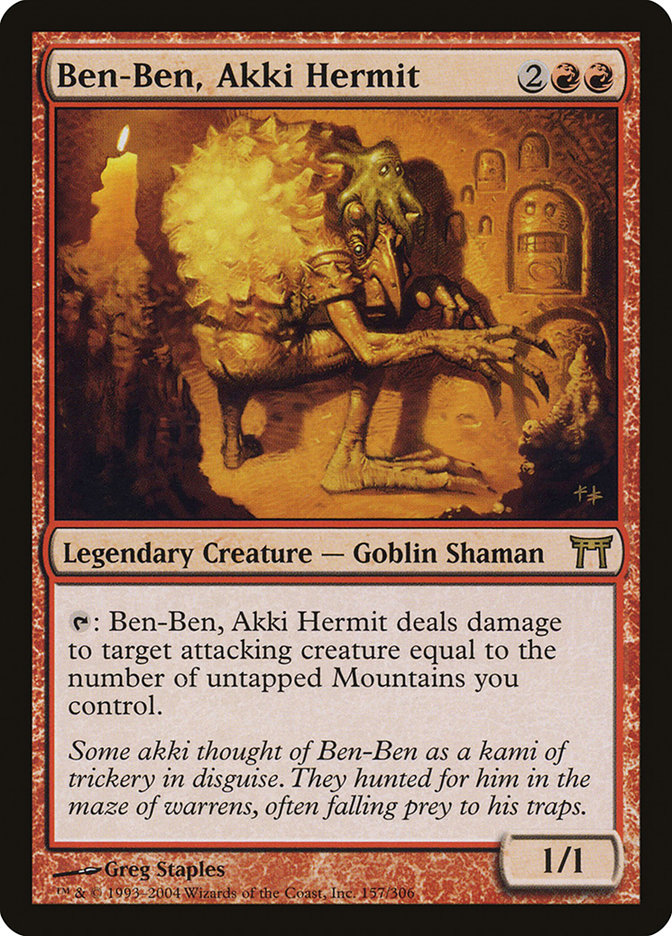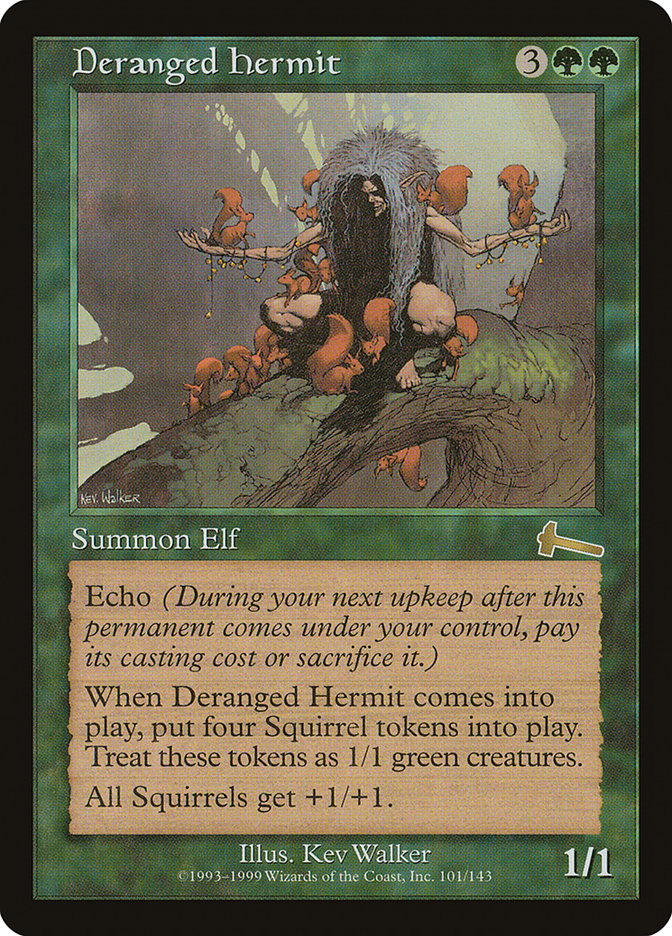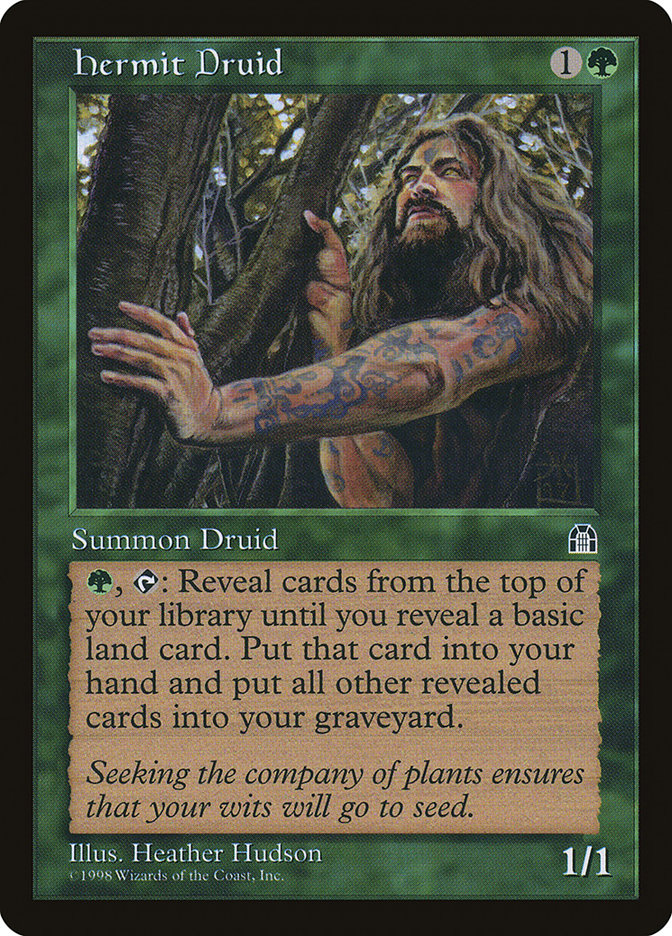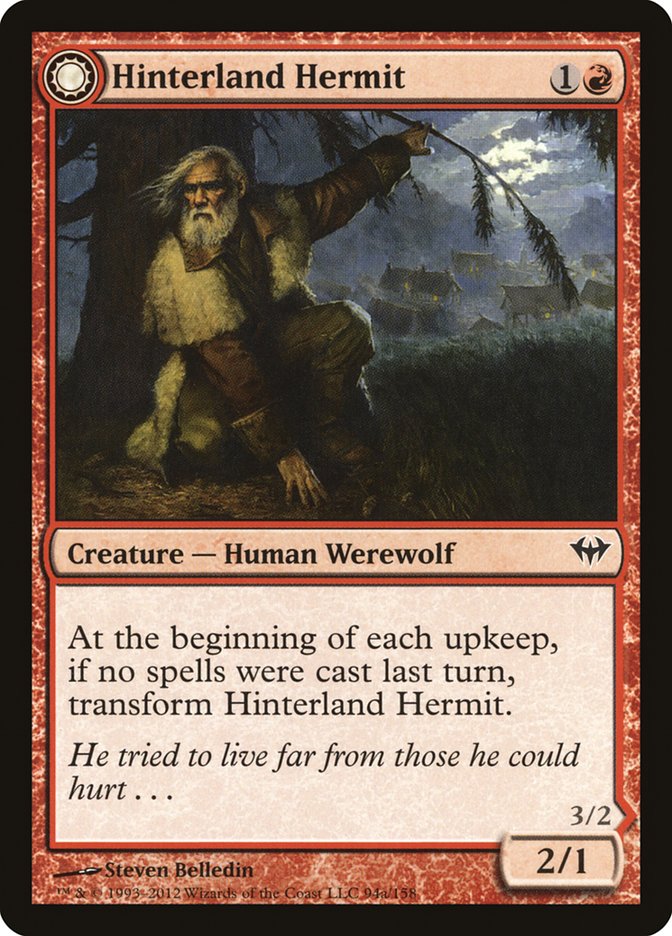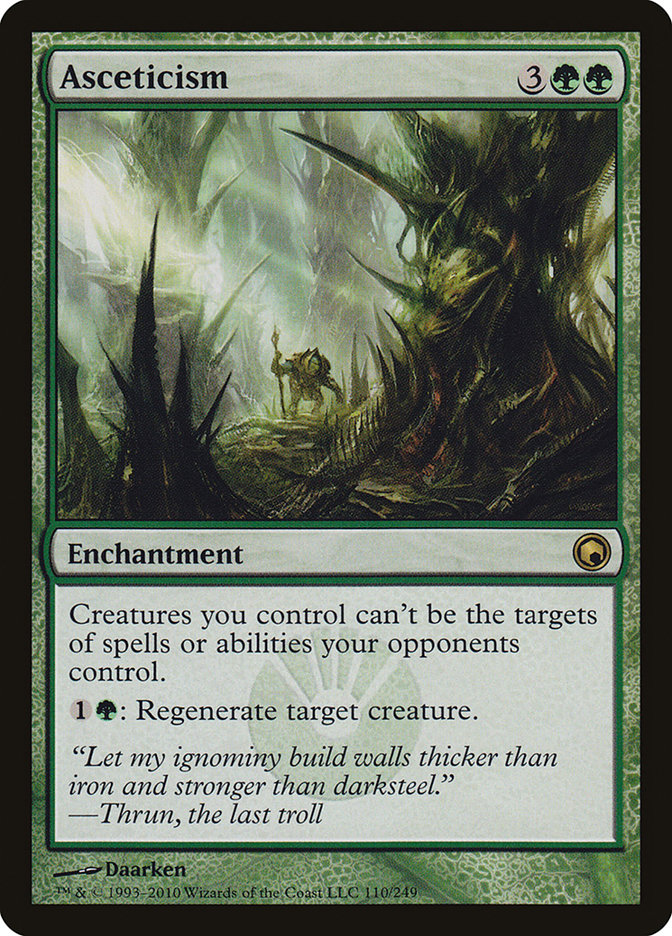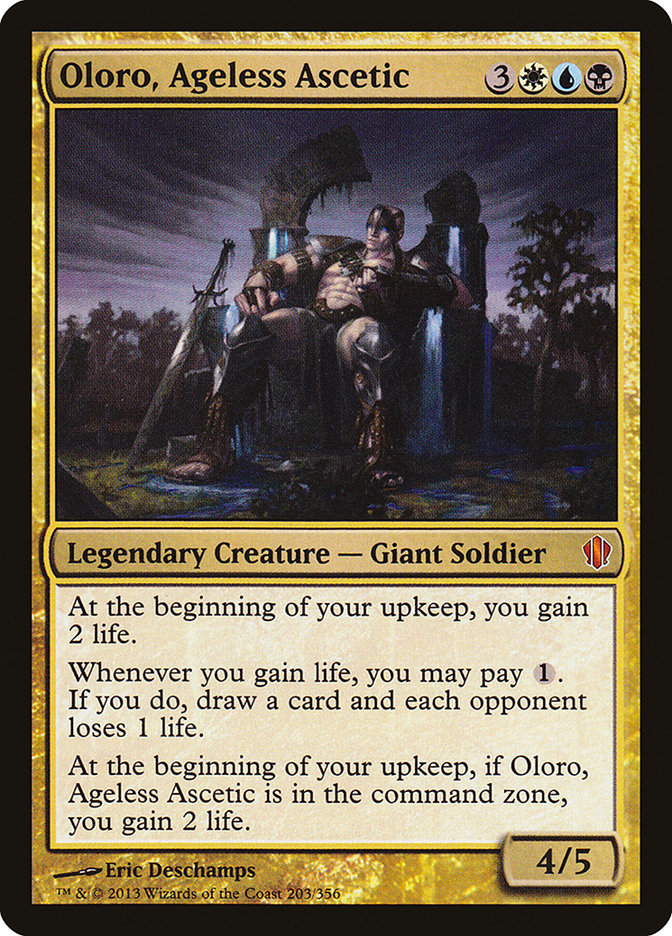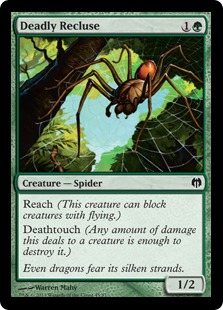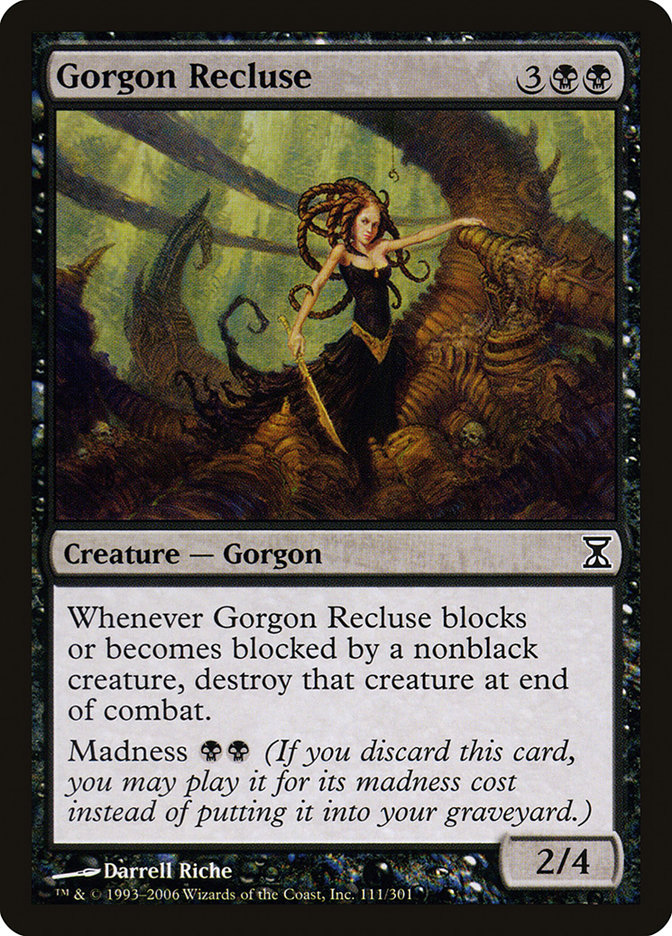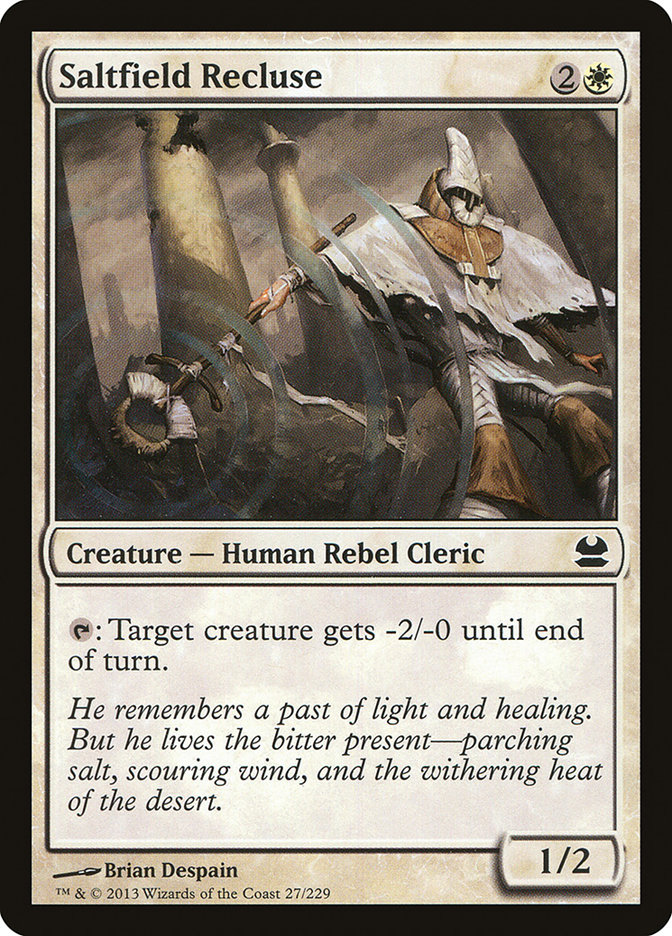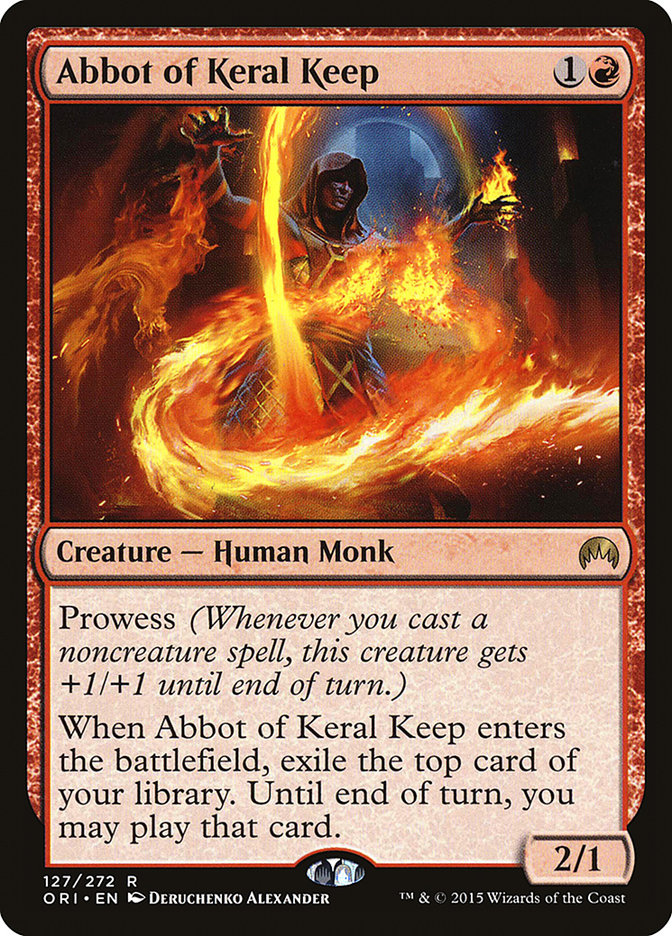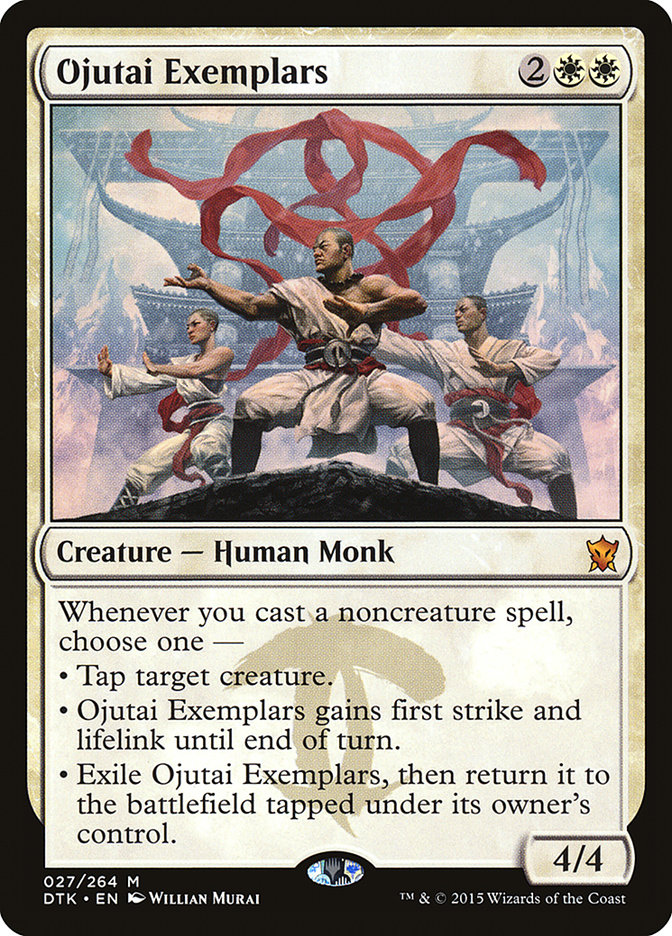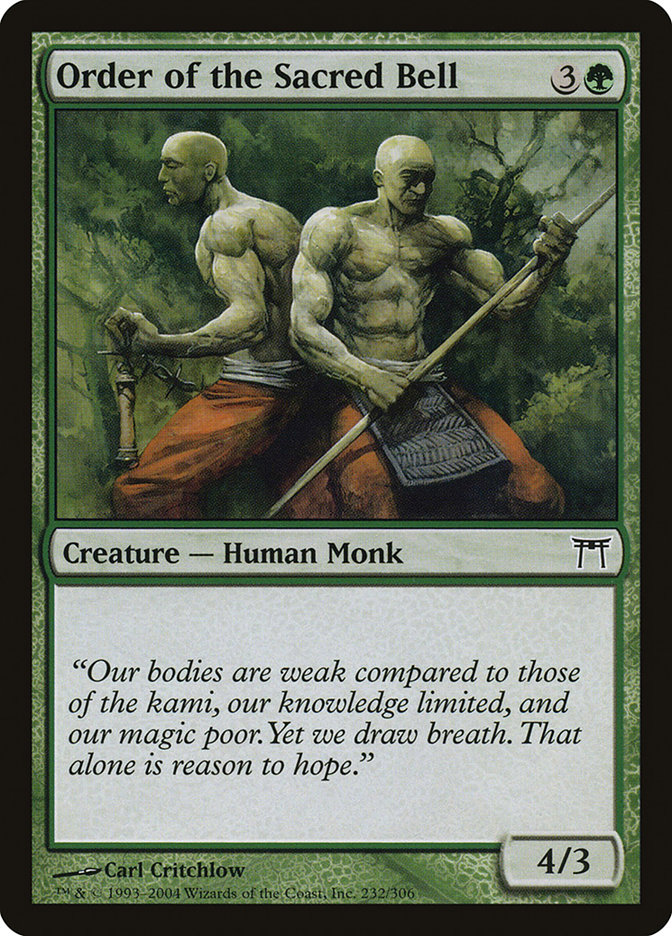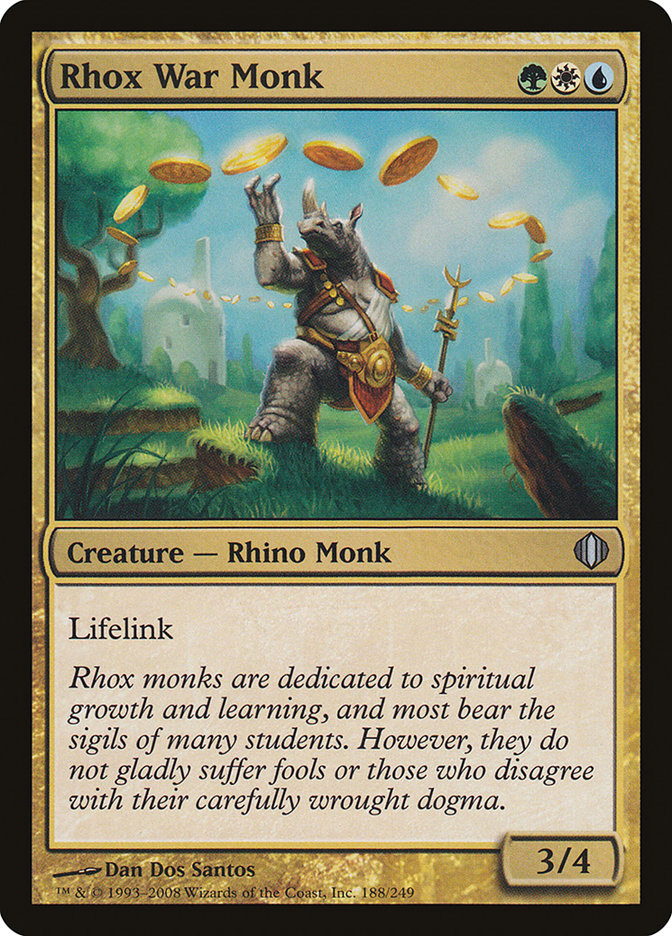 J.D. Salinger retreating to New Hampshire, the elder who won’t let anyone into a house falling apart.
J.D. Salinger retreating to New Hampshire, the elder who won’t let anyone into a house falling apart.
Maybe it was the older, religious meaning instead: the ones who gave up the world and its pleasures for a life of prayer or meditation, the ascetics of India or Italy, Sister Wendy learning about art through postcards.
Maybe nothing came to mind at all. That’s okay too. Not everyone has met every word yet, and I’m always learning new ones.
Maybe what came to mind was a Magic card.
Magic is played in pairs or in community, and in a roundabout way this is reflected in the game itself. For all the loners at heart who play Magic (and here I must count myself among them), there are only six cards with “Hermit” in the name:
There are related tropes, of course: asceticism (Asceticism?), recluses, monastics, and so on. I will put those aside for now to focus on the six hermits in particular.
The Hermits
Interestingly enough, the hermits are concentrated in two colors, red and green. They also split roughly into two camps, the “go it alone” modern meaning in red and the religious / philosophical / way of life approach in green.
Hinterland Hermit on the plane of Innistrad became a hermit, it seems to me, as an act of love. He’s a werewolf. He knows that he could switch over to his bestial side and start tearing up the town at any moment. However much he might need to be part of a community, it’s safer for everyone involved for him to live far, far away from others.
Not that it does much good in the end.
On the plane of Kamigawa, Ben-Ben, Akki Hermit is a more complex case. He’s a Shaman, so he has some mystical, magical abilities. On the other hand, he doesn’t seem to seclude himself for religious reasons; he just wants to be left alone.
Of course, such a will to seclusion naturally draws suspicion. The flavor text unwinds a whole story with a little thought: Ben-Ben wants to be left alone and holes up in a mountain cave, rigging some traps for those who would come hunting him; a Goblin, malicious or not, comes looking and gets killed; and then there’s an escalating war of traps and hunting as Ben-Ben assumes near-mythic status among the Akki.
Poor Ben-Ben. He just wants to be left alone so he can enjoy his squid hat.
Going on to green, Magic’s first hermit was the Hermit Druid, from Stronghold. While the flavor text isn’t particularly complimentary, Hermit Druid was a tremendous powerhouse in Magic, fueling plenty of degenerate combo decks; if one has no basic lands in one’s deck, a single Hermit Druid activation dumps the entire library into the graveyard, and there are plenty of ways to win from there, usually involving Dread Return and Narcomoeba. It’s banned in Legacy for good reason.
Also seeing heavy play in its day, though not considered ban-worthy, was Deranged Hermit. The Squirrel-making Elf formed the “Millions” part of “The Rock and His Millions,” a G/B deck created by Sol Malka that later had its name shortened to “The Rock,” one of the longest-lasting deck archetypes of Magic.
The freakishly skinny Thelonite Hermit, as befits a Time Spiral rare, is a less-than-subtle callback to Deranged Hermit, only it produces Saproling tokens instead of Squirrels. Magic doesn’t do Squirrels anymore, you see. They don’t fit with the grimdark magepunk aesthetic of more recent Magic…
Actually, I’m not being fair with that complaint. Squirrels didn’t fit in with the post-apocalyptic Dominaria of Time Spiral. I just wanted to throw in the mini-rant about Squirrels.
Speaking of things that aren’t part of Magic anymore, Taoist Hermit references a real-world belief system directly in its name. It’s also one of the first two cards with hexproof, though it wasn’t called that at the time. For more information on Taoist Hermit, please see my article “Nooks & Crannies.”
The Ascetics
Closely related to the hermit life, though not in one-to-one correspondence, is the idea of asceticism.
The trolls of Mirrodin and Scars of Mirrodin practiced a form of asceticism … as well as playing keep-away with the secrets of the plane, which didn’t end well either time.
Another green ascetic keeps with the theme of giving up civilization’s worldly trappings. The Topan Ascetic, from the Bant shard on what later became Alara, wanders the deserts and looks for people who have rejected Bant society (irony alert!) in order to beat them into submission.
Magic’s other two ascetics have white, the color of order, in their identities. The Enlightened Ascetic from Theros may be spiritual, but she’s having none of that plane’s petulant pantheon. Oloro, Ageless Ascetic is a Giant Soldier enigma, possessor of the secret of eternal life … and washboard abs.
The Recluses
Not all of them, mind you. Most of Magic’s recluses are actually Spiders.
On Earth, recluse spiders generally live up to their name; they’re shy and nonaggressive and will only bite if threatened. On the other hand, because brown recluses are among the few potentially fatal spiders existing in the United States, they’ve developed a far more fearsome reputation, in second or third place behind the black widow and possibly the non-fatal tarantula. (On the other hand, the Australian funnel-web spiders, responsible for a number of deaths, are relatively unknown outside that continent.)
But enough about non-sapient recluses. I’m here to talk about the sapient ones!
Two of the three sapient recluses are from Time Spiral block: Gorgon Recluse, from the titular set, and Saltfield Recluse from Planar Chaos. That a Gorgon should become a recluse is no surprise; Gorgons and non-Gorgons don’t get along as neighbors. Something about the whole “eye contact turns the non-Gorgon to stone” thing, I guess.
The Saltfield Recluse is a more interesting case. The flavor text tells a small sad tale of a man who remembers the healing that once took place on Dominaria, healing that he likely once participated in. But now he has only the scouring salt for company, and the little magic he has left, he uses to negate threats rather than prevent or heal damage. One can only hope that he lived to see better times, but probably not.
The Monastics
This is the largest category, numbering in the dozens. It is also the most challenging category to find examples of solitaries in as well.
A key part of much monastic experience, whether among the Benedictines of St. Gregory’s Abbey or the Buddhists of Shaolin, is community. Even among the Jeskai of Tarkir and the pyromancers of Regatha, the drive for individual expression has been matched by the passionate needs of association and belonging.
The two planes with the highest numbers of Monks, Tarkir and Kamigawa, both have roots in Asia and take on that flavor of monasticism as well as all the cultural baggage that goes along with it. Within those traditions, of course, there are those who take the ascetic’s path, such as Dosan the Falling Leaf.
In third place is Bant on Alara, previously covered briefly with the example of Topan Ascetic. Many of Alara’s remaining Monks are rhoxes, anthropomorphic Rhinos. The Rhox War Monk with its legacy of students is no solo traveler. Neither is the Rhox Bodyguard, literally defined by the one or ones it is charged with protecting.
But here and there in the Multiverse, solo monks appear: the Lone Missionary in Rise of the Eldrazi in Zendikar block, the Loxodon Wayfarer abandoned by the elders in Scars of Mirrodin, the blood-sacrificing Thelonite Monk in Fallen Empires.
And then there are those who are Monks in (Magic) spirit but not yet in fact; “Monk” is a gendered title in Western religious culture, and while there are no Nuns in Magic, there is the Abbey Matron. The “Abbey” portion of the name suggests an abbess, or at least a Mother Superior; the “Matron” part evokes a senior nurse. So far, though, the Abbey Matron is not listed as a Monk, but merely a Cleric. Perhaps a future Great Creature Type Update will rectify the mistake.
Who’s your favorite hermit, ascetic, recluse, or Monk? Which paragon of isolation has your undying adoration?

